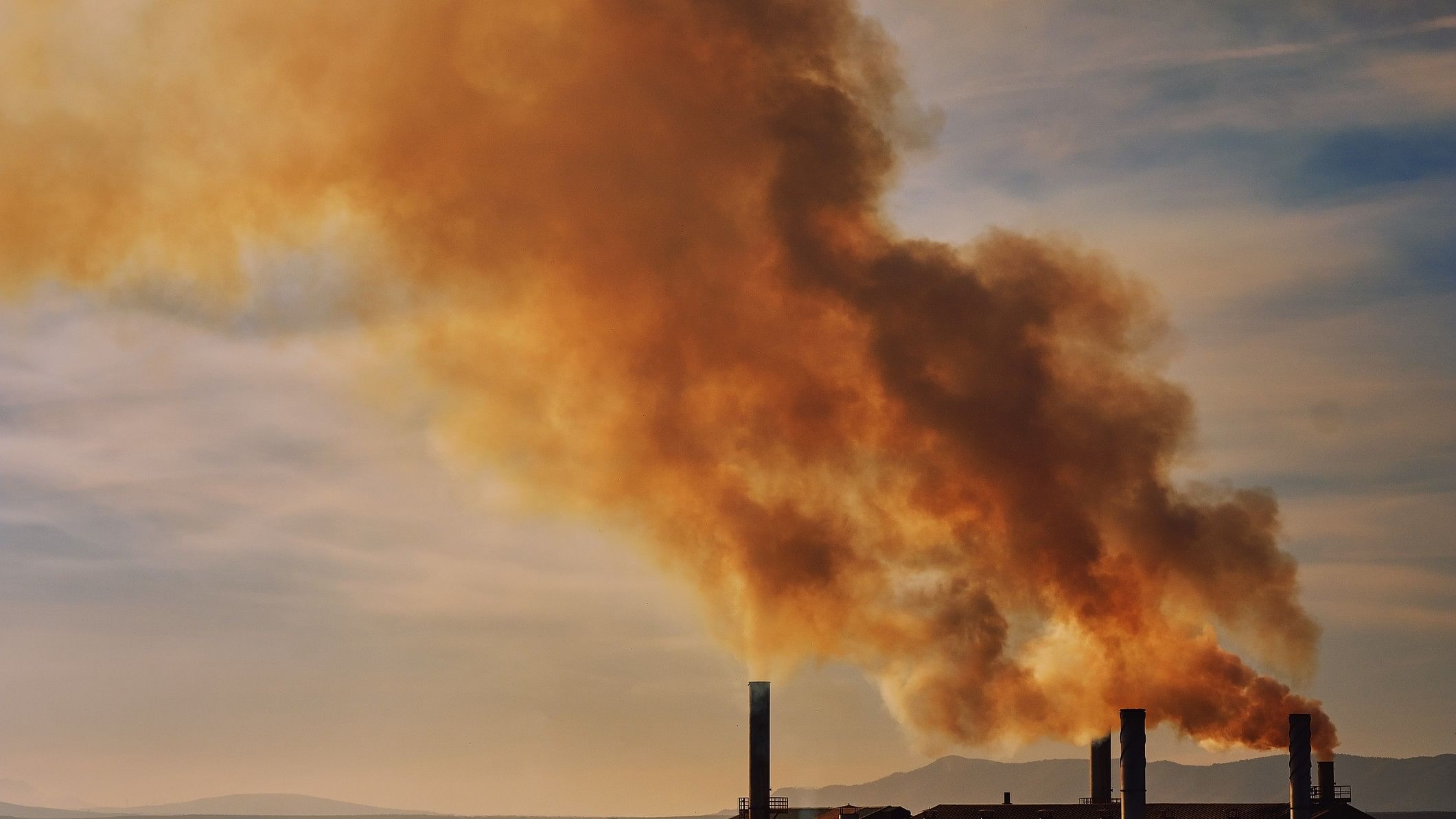
According to Raghu Murtugudde, an Earth system scientist and a professor at IIT-Bombay, data is a severe limitation since pollution is a hyperlocal problem even within a city.
(Representative image)
Credit: iStock Photo
New Delhi: Indian cities can play a central role in reducing greenhouse gas emission and building resilient urban environments if data collection and "scenario modelling" were strengthened, according to experts working on urban emission and strategies on mitigation plans.
Using the Climate Action for Urban Sustainability (CURB) tool, up to 77 per cent of urban emission could possibly be tackled by 2050 by identifying sectors having the greatest potential in slashing emission, a team from Delhi's World Resources Institute (WRI) found.
However, the challenges are plenty, the authors said.
These include a limited capacity of institutions for data-driven exercises. This will need to be addressed to slash greenhouse gas emission and create sustainable, resilient urban environments.
"Strengthening data collection, scenario modelling, and capacity-building frameworks will enable cities to set more ambitious and achievable climate targets, positioning them as key drivers of India's overall greenhouse gas emission reduction efforts," Saransh Bajpai, associate director, climate, WRI India, and one of the study's authors told PTI.
Scenario modelling allows the exploration of a range of future possibilities while capacity-building frameworks aim to improve the technical infrastructure needed to use tools such as CURB.
According to Raghu Murtugudde, an Earth system scientist and a professor at IIT-Bombay, data is a severe limitation since pollution is a hyperlocal problem even within a city.
"Data can allow identification of hotspots and causes -- like traffic jams, waste incineration, local inversions and so on. Seasonality can also be identified and these will help prioritise mitigation actions," said Murtugudde, who was not involved in the study.
For a recent working paper, the WRI team used CURB, developed by the World Bank and collaborators, to devise emission mitigation plans for Surat, Indore and Ujjain, including sector-specific strategies.
The cumulative impact of these plans was then measured under long-term scenarios, developed by involving city-level stakeholders and authorities.
The paper was released earlier this month during WRI India's annual flagship event, Connect Karo, which brought together leaders and policymakers involved in building sustainable cities.
Launched in 2016, the open-source, interactive CURB tool -- one of the many international ones available for devising mitigation plans -- uses local data, such as of buildings and public lighting, for providing a tailored analysis to help cities evaluate low-carbon actions.
If the data set is incomplete, the findings will not be as conclusive.
As urban population continues to increase, pollution in cities is driving rising trends in India's per capita greenhouse gas emission.
While ambitious targets for cutting down emission have been laid out at the national and state levels, there is a lack of guidance for setting similar targets for cities, thereby hindering effective planning for mitigating climate change at the urban level, the study found.
The authors wrote, "Under the business-as-usual scenario, the increase in emission across the three cities is between 1.5 and 2.7 times by 2050, compared to the 2019 values."
"However, in a relatively high-ambition scenario, cities could reduce the greenhouse gas emission projected for 2050 by an average of 70 per cent (Surat) to 77 per cent (Indore), compared with the business-as-usual scenario," they wrote.
Energy and buildings sectors showed the highest potential for emission reduction.
Reducing greenhouse gas emission in the electricity generation sector, also known as grid decarbonisation, emerged as the most effective strategy, contributing on average to 39 per cent of the total emission reduction across the three cities by 2030, they said.
Solar systems on residential buildings and energy-efficient lighting were projected to contribute 28 per cent and 15 per cent, respectively, towards the reduction of total emission.
"The paper recommends expanding similar mitigation models to other cities across India, ensuring that city-specific actions are integrated into broader state and national climate strategies," WRI India's Bajpai said.
According to the study's authors, despite the potential of CURB, there is limited documentation on its usage, including studies conducted in an Indian context.
Data for their analysis, such as city population, streetlight numbers and waste management, was collected from city civic bodies, private stakeholders and third-party agencies.
However, at the end of the day, data and software tools can only support decision-making and mitigating emission is a governance, policy, legislation and enforcement issue, Murtugudde said.
A 2022 study, published in the International Journal of Environmental Science and Technology, used CURB to understand greenhouse gas emission trends in the Iranian city of Shiraz.
The authors from the University of Khuzestan, Iran, found that the residential sector contributed the most (60 per cent) to greenhouse gas emission, followed by urban transport (over 30 per cent).
The tool was also used for predicting emission up to 2035.
CURB is being used in Buenos Aires (Argentina) and Johannesburg (South Africa), and in multiple Indian cities, including Ahmedabad, according to World Bank.